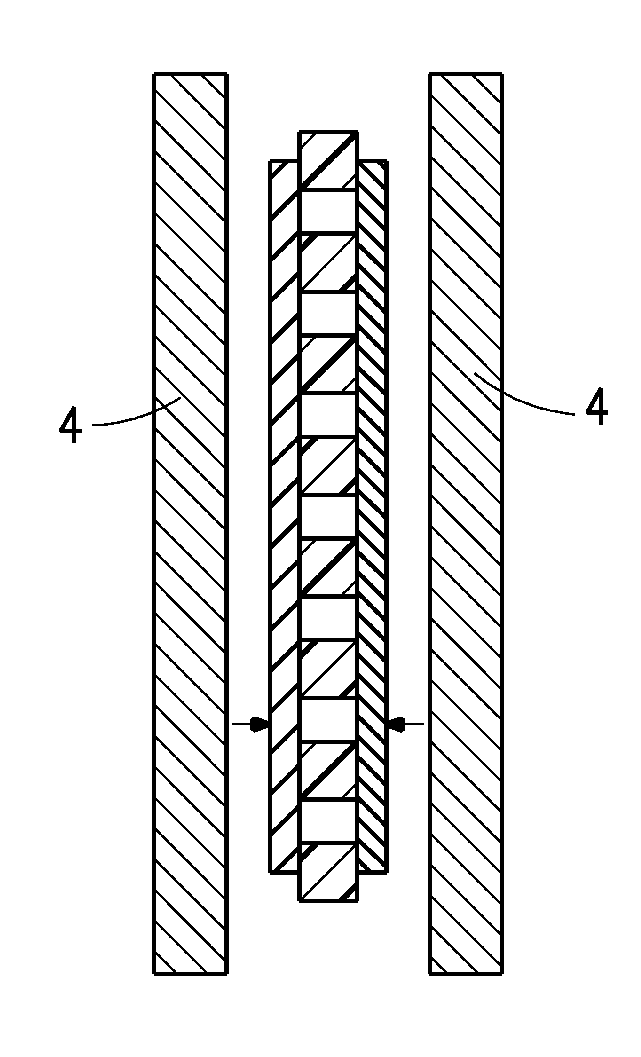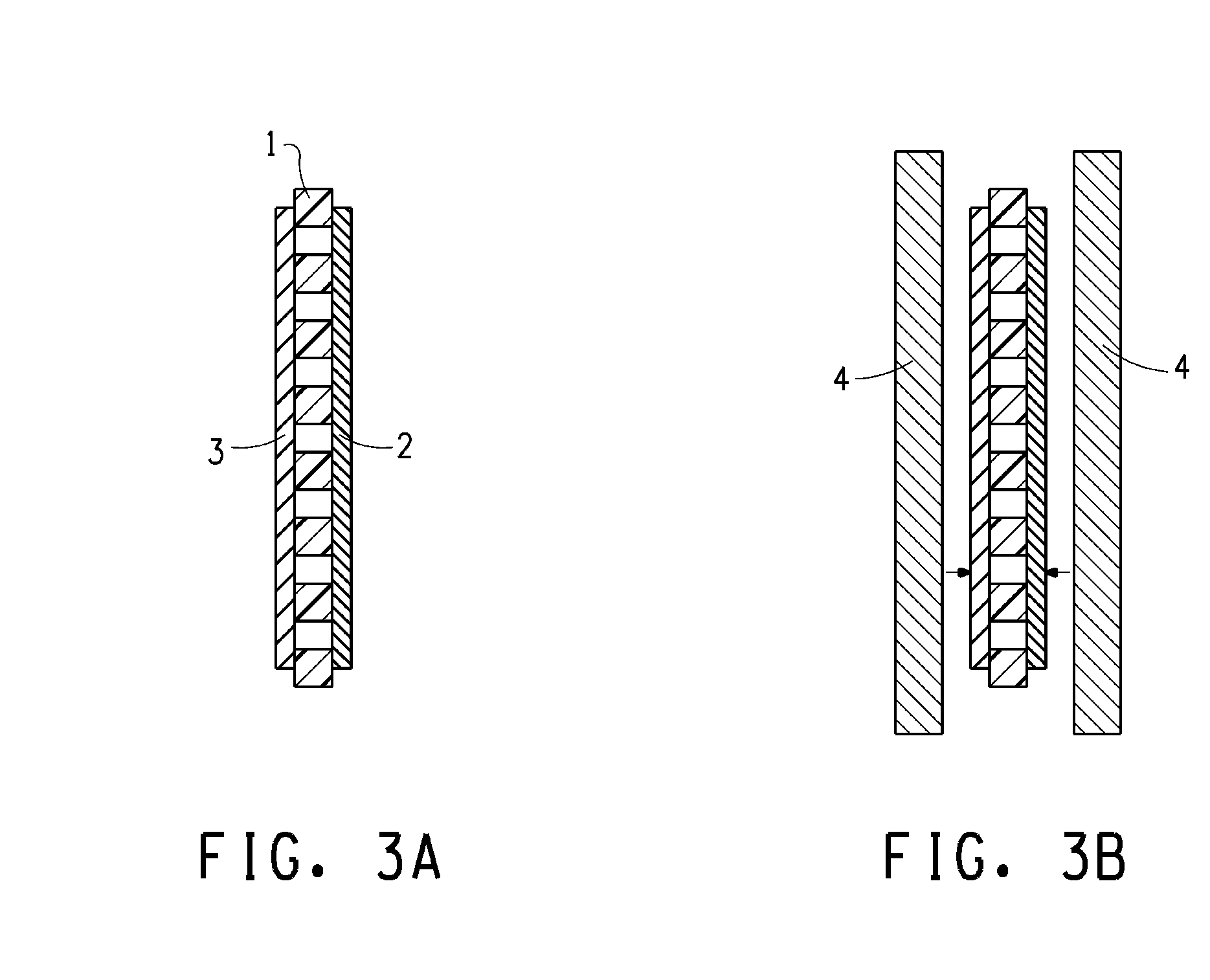Multi-layer article comprising polyimide nanoweb
- Summary
- Abstract
- Description
- Claims
- Application Information
AI Technical Summary
Benefits of technology
Problems solved by technology
Method used
Image
Examples
examples
Test Methods
[0078]The parameter “crystallinity index” as employed herein refers to a relative crystallinity parameter determined from Wide-Angle X-ray Diffraction (WAXD). X-ray diffraction data were collected with a PANalytical X'Pert MPD equipped with a Parabolic X-ray Mirror and Parallel Plate Collimator using Copper radiation. Samples for transmission geometry were prepared by stacking the thin films to a total thickness of approximately 0.7 mm. Data were collected over a range of two-theta of 3 to 45 degrees with a step size of 0.1 degree. Count time per data point was 10 seconds minimum with the sample rotating about the transmission axis at a rate of 0.1 revolutions per second.
[0079]The WAXD scan so generated consisted of three contributions: 1) a background signal; 2) scattering from ordered but amorphous regions; 3) scattering from crystalline regions. A polynomial background was fitted to the baseline of the diffraction data. The background functio...
example 5
[0118]Following the preparation of NW-2, the dried and calendered, but not yet imidized, nanoweb specimens of PAA nanofibers were then heated by placing the sample on a metal tray lined with Kapton® film and then placing the tray with the sample on it in a laboratory convection oven preheated to temperatures ranging from 200° C. to 475° C. for 2 minutes The mean fiber diameter from the sample heated at 475 C for 2 minutes was 707 nm and the porosity was 50.5%. The sample with no additional heating had a mean fiber diameter of 775 nm and a porosity of 50.8%
[0119]Degree of imidization (DOI), crystallinity index (C.I.) and tensile strength (ISO 9073-3) were also measured. Results are shown in Table 9 and depicted graphically in FIGS. 8 and 9.
TABLE 9AnnealBasisTempTensileDOIWtExampleC.(psi)(%)C.I.gsm5-1180107729.30.0618.45-2200119339.50.0418.15-3250344184.40.0517.55-4300484196.50.11175-5350504797.90.1416.35-6400579395.80.25165-7425646198.60.22165-8450716795.10.33165-9475742794.40.416
[01...
example 14
[0126]Four 8.5″×10″ sheets of BPDA / RODA samples were heated in an air convection oven at 200° C. for 2 minutes and 220° C. for 30 minutes, and were subsequently calendered at 1500 pli between cotton and metal calendar rolls. After calendering, the samples were then annealed in an air convection oven for two minutes at temperatures ranging from 300-450° C. Crystallinity index for each sample was determined according to the method supra. Break strength was determined on 6×0.5 cm strips that were pulled until breaking using a hand scale, and the force required to break each sample was recorded. FIG. 11 and Table 14 show a correlation between break strength and crystallinity in these samples.
TABLE 14AnnealBreakTempStressCrysExampleC.Kg / cm2Index14-12202530.0414-23002550.0514-34003300.1414-44503780.18
PUM
 Login to View More
Login to View More Abstract
Description
Claims
Application Information
 Login to View More
Login to View More - R&D
- Intellectual Property
- Life Sciences
- Materials
- Tech Scout
- Unparalleled Data Quality
- Higher Quality Content
- 60% Fewer Hallucinations
Browse by: Latest US Patents, China's latest patents, Technical Efficacy Thesaurus, Application Domain, Technology Topic, Popular Technical Reports.
© 2025 PatSnap. All rights reserved.Legal|Privacy policy|Modern Slavery Act Transparency Statement|Sitemap|About US| Contact US: help@patsnap.com



